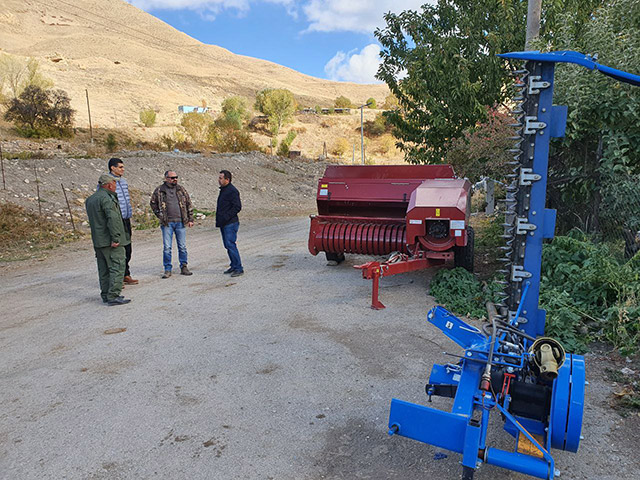Partnership for the sake of environment Native wild fruit trees were planted in Gnishik settlement
With the efforts of Viva-MTS and the Foundation for the Preservation of Wildlife and Cultural Assets, important and serious environmental processes have been recorded in different regions of Armenia for over 15 years. The partnering organizations implement tree-planting activities as well, which have already been proved successful. The autumn tree planting became an annual event, and this year, too, thousands trees have been planted.
With the support of Viva-MTS 2000 wild fruit trees were planted in Gnishik settlement of Areni community, Vayots dzor region this year. The selection of trees will contribute to resolving the conflict between the humans and the wildlife in the area. The tree planting is organized within the FPWC’s “Forest Landscape Restoration in the Area of the Caucasus Wildlife Refuge” project.
Read also
Four endemic wild tree species were planted (wild almond, wild pear, wild apple, and oleaster). FPWC takes care after the trees after the planting (from 3 to 5 years) until the newly planted seedlings become healthy trees, able to survive without additional irrigation.
Starting from 2016 tree planting activities are organized in the communal lands, introducing a completely new and experimental way of tree planting for Armenia, which allows to have healthy tree seedling from the seeds gathered from local forests. During these years around 350.000 trees were planted in Armenia.
FPWC uses a Target Plant Concept methodology to grow the trees in a tree nursery, choosing native wild fruit tree species. The selection of these tree species is conditioned by the specificity to the area. The methodology allows having a high survival rate both in the nursery and after the actual planting. By planting wild food trees reforestation also contributes to the resolution of the “human-wildlife” conflict, that is, providing sufficient food for wildlife in forest areas to avoid their entrance in populated areas of communities.
“The community development has always been in the focus of our attention. It implies comprehensive activities ranging from tree-planting to development of infrastructures. Though those are different issues and seem to be unrelated at first sight, they, however, are the various links of the fundamental process and are aimed at solving the same problem. Our purpose is to implement programs with long-term impact. That stems from our CSR strategy and the value system we adhere to. Anything that is done today will have an impact for many years to come,” Viva-MTS General Manager Ralph Yirikian said.
The partners have implemented many projects in Gnishik settlement. This year, a hay harvester and a mower were acquited for the settlement. The new agricultural machinery will enable the residents of Gnishik to carry out the seasonal agricultural works more quickly and efficiently.
Related information:
Towards conserving biodiversity and establishment of sustainable livelihoods, FPWC has a goal to restore several plots of highly degraded sparse forests in the territory of Caucasus Wildlife Refuge. Restoration has significance from the point of view of ecosystem services provided by forest but it is also serious challenge considering non favorable natural climatic conditions of arid and semi-desert climatic zone.
An intervention aimed at enhancing the ability of desired species regeneration, creating also a habitat, migration routes and food source for wildlife. The plantations should predict the soil layer from further depletion and loss, serve for water storage etc.
Following “Mosaic” restoration practices, our approach is creation of a landscape of multiply land uses. A dynamic, ecologically based, natural resources management system, which, through the integration of wild fruit trees and the agricultural landscape, diversifies and sustains production for increased social, economic and environmental benefits for land users at all levels.
The years of practice resulted to have a very high survival rate for the tree species (up to 90%).





























































